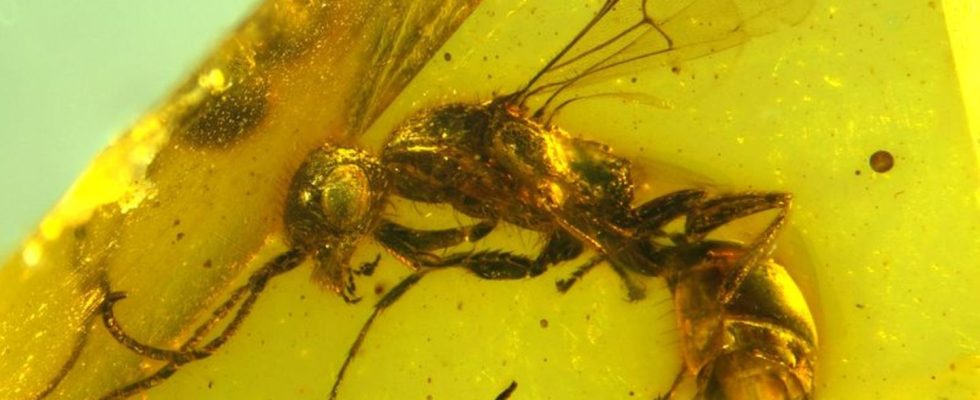Animals
Entomologists discover long-extinct wasps
Entomologists have discovered a previously unknown species of wasp in a 100 million year old amber. photo
© Brazidec et al. 2024 Insects, 15/Übersee-Museum/dpa
Researchers from Germany and France have examined amber that is around 100 million years old – and made a special find.
Entomologists have discovered a previously unknown species of wasp in a 100-million-year-old amber. “It is a long-sought puzzle piece that helps us understand the phylogeny of this group of wasps, which is now widespread almost worldwide,” explained Volker Lohrmann from the Übersee-Museum Bremen, who describes the wasp in the journal “Insects” together with French colleagues. “Today’s relatives can be found worldwide, on all continents apart from Antarctica. We also have so-called flat wasps, some of which are even used as beneficial insects for biological pest control.”
A private collector from Lower Saxony discovered the amber from the Cretaceous period in northern Myanmar and made it available for research. “It is relatively complicated to examine a small amber because you need high-resolution microscopes,” said Lohrmann. But because amber is often transparent, fossils can be examined from all sides using a light microscope. “To find out what kind of wasp it is, we then compare the fossil with the scientific literature. We have to find out: is it actually a new insect or have we perhaps known about it for years?”
According to their own information, the scientists determined that it was a species of wasp from a previously unknown genus. The fossil of the species Hukawngepyris setosus is almost twice as old as the oldest representatives of flat wasps to date.
The researchers do not know where the wasp was widespread at that time, when and why it died out. “We actually can’t say anything about that because this find is an isolated find,” said Lohrmann. But the fossil helps to get an impression of what the world looked like around 100 million years ago. “For science, amber is a unique window into the past.”

